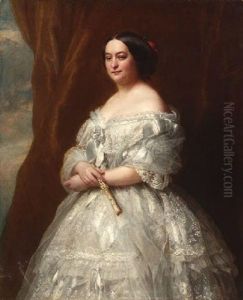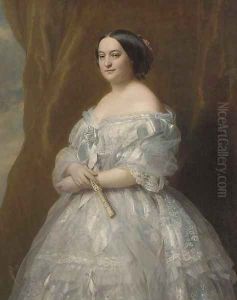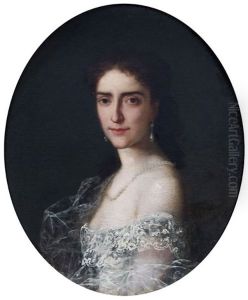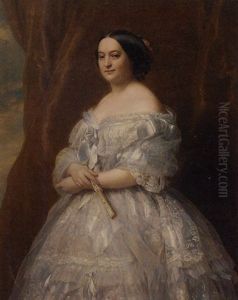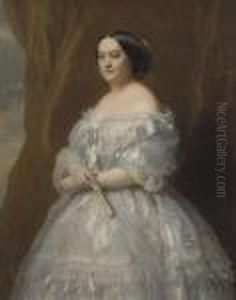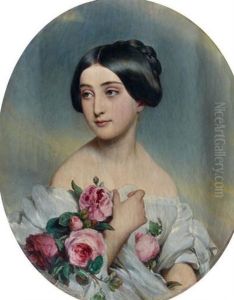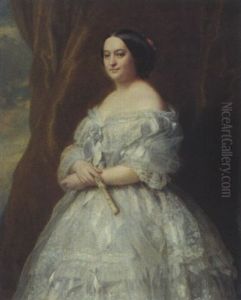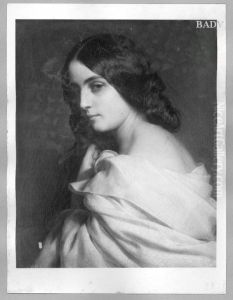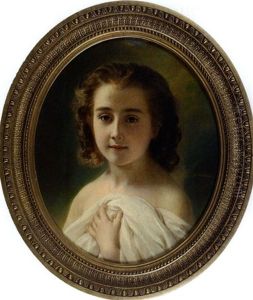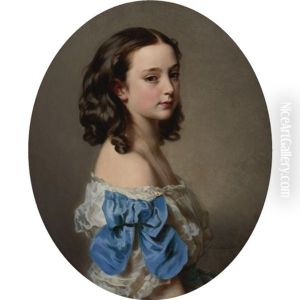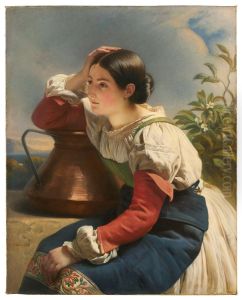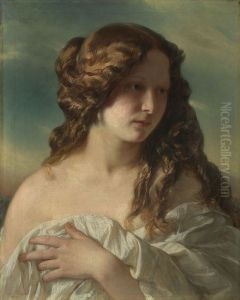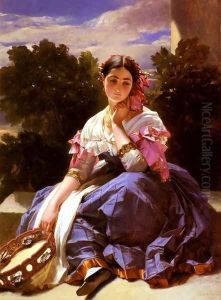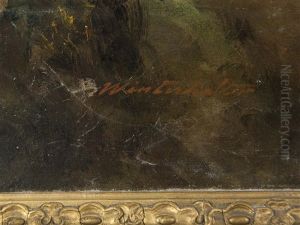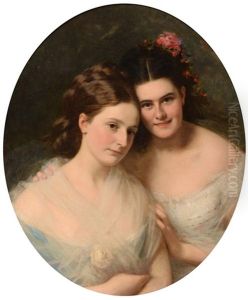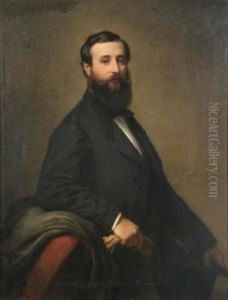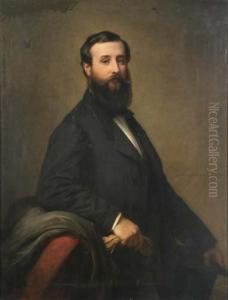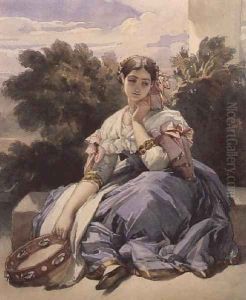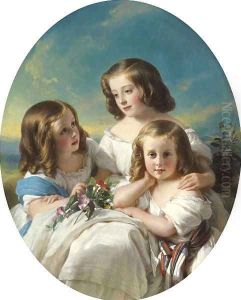Hermann Winterhalter Paintings
Hermann Winterhalter was born on September 23, 1808, in Menzenschwand, Grand Duchy of Baden (now part of Germany). He was the younger brother of Franz Xaver Winterhalter, the renowned portrait painter whose works captured the elegance and sophistication of the European aristocracy during the mid-19th century. Unlike his brother Franz, who achieved widespread fame and recognition, Hermann remained relatively lesser-known, though his contributions to the art world were significant in their own right.
Hermann showed an early interest in the arts and was initially taught by his brother Franz. He later pursued formal education in painting. His early career was marked by travels and studies in Italy, where he was deeply influenced by the Renaissance masters. Hermann's style, much like his brother's, was characterized by its fine detail, vibrant colors, and a delicate touch, though he often focused more on landscapes and genre scenes rather than portraiture.
Throughout his life, Hermann worked closely with Franz, assisting him with several major commissions. The brothers traveled together extensively, including stays in Paris, which was then the center of the art world. While in Paris, Hermann was exposed to the works of contemporary artists and the evolving styles of the time, which influenced his own artistic development. Despite his talents, Hermann's work was often overshadowed by the success of his brother, leading to him being somewhat overlooked by historians and collectors.
Hermann Winterhalter's contributions to art extend beyond his own creations. He played a crucial role in supporting his brother's career, contributing to the completion of numerous portraits and projects. His landscapes and genre paintings, although less known, showcase a keen observation of nature and a mastery of atmospheric effects.
Hermann Winterhalter passed away on February 24, 1891, in Karlsruhe, Germany. In recent years, there has been a growing interest in his work, with art historians and collectors beginning to appreciate his unique contributions to 19th-century European art. His paintings, while not as prolific or celebrated as his brother's, provide a fascinating insight into the artistic movements of the time and the collaborative spirit between the Winterhalter brothers.

